2014 Chevrolet Malibu Review

When the 2013 Malibu arrived last year, it received a lukewarm reception. Chevrolet dealers didn’t like how much it looked like the old model, and found it hard to promote on their lots against the old car. Critics pointed out several issues with the car including the eAssist engine, rear seat comfort, material quality and exterior styling. This led to consumers not buying the new Malibu in the quantities Chevrolet would have liked; it is currently tied for fifth in mid-size sedan sales.
FAST FACTS
| 1. A 2.5L 4-cylinder makes 196 hp and 186 lb-ft while an optional 2.0T makes 259 hp and 295 lb-ft. |
| 2. Only transmission is a six-speed automatic. |
| 3. The 2.5L is rated at 25 MPG city, 36 MPG highway. The 2.0T is rated at 21/30 MPG. |
| 4. Pricing starts at $22,965 including delivery. |
So Chevrolet went back to the proverbial drawing board to revise the Malibu for the 2014 model year and address some of these shortcomings. First up was the exterior. The front-end is massaged to better resemble the 2014 Impala, which features Chevrolet’s new corporate look. The bar that dissects the grill is slimmed down and less pronounced. As well, the larger lower grill makes the car not only look more modern, but also more aggressive. Sadly, the rear end was not touched and those bizarre quad square tail lamps are still there in all their shameful glory.
DING DONG THE “ECO” IS DEAD
But under the hood, the news gets better. An updated version of GM’s 2.5-liter direct injection four-cylinder engine with new variable valve lift control (iVLC) is now the base engine. It is officially rated at 196 hp and 186 lb-ft of torque, which is down one hp and five lb-ft compared to last year.
The reason for this tuning is to achieve greater efficiency and paired with the standard start/stop technology, it can now reach fuel economy ratings of 25 MPG city and 36 MPG highway; three mpg better in the city and two better on highway than last year’s 2.5-liter engine and far more competitive for this class. The new 2.5-liter is as efficient as the 2.4-liter eAssist engine, so Chevrolet thankfully decided to euthanize that unloved engine. Now if Buick would just get the memo…
See Also: 2013 Chevrolet Malibu Review
Being less than bullish on start/stop technology, I didn’t have high hopes for it in the Malibu, especially since there isn’t a way to turn it off. However, Chevrolet worked on this technology through the eAssist program and appears to have mastered it. The transition between start-stop-start is seamless; smoother than the systems found in BMWs or Mercedes-Benzes even. To ensure the car has enough juice to keep auxiliary items running when the engine is off, the 2.5-liter Malibu comes with two batteries in the car; one in the front and one in the rear and to even further maximize efficiency, there is an “Eco” mode for the air conditioning unit.
WANT MORE POWER?
Chevrolet figures roughly 80-90 percent of Malibu buyers will go for the 2.5-liter engine. After a brief drive around Michigan in the new car, the engine feels plenty powerful enough for this car and probably is the better choice for money and fuel savings. But if it’s more power you are after, you’re in luck. Chevy decided to tweak the 2.0-liter turbocharged four-cylinder engine as well.
Although it still makes the same 259 hp, there’s quite a bit more torque. Now with an extra 35 lb-ft on tap, this Malibu has a massive 295 lb-ft of torque total. That is more than any other engine offered in a comparable mid-size sedan and enough to propel this car from 0-60 mph in under six seconds. Fuel economy is decent at 25 MPG city, 36 MPG highway, but still trails the 2014 Mazda6, which offers up to 28 MPG in the city and 40 on the highway.
The six-speed automatic found with either engine is reworked this year, as is the chassis. The 2013 Malibu already had one of the creamiest rides in the mid-size sedan market, but Chevrolet made a few enhancements derived from the 2014 Impala program to further refine the suspension. The car doesn’t only feel more isolated from road imperfections, but also handles better and feels more composed on the road; especially with the 2.0T.
A gripe we had with the 2013 Malibu was the artificial steering feeling. For 2014, it is stiffer and feels far more connected to the road, but it still isn’t perfect. With these enhancements, even the 3,660 lbs. top-of-the-line Malibu feels a bit playful and hides its weight well.
AND THEN THERE IS THE INTERIOR
As much as Chevrolet wanted to fix all of the Malibu’s short comings, it would be hard to address rear seat space completely without redesigning the car’s body. Still, Chevrolet did whatever was physically possible to improve rear seat space and succeeded to a degree.
The front seat backs are thinner and have indents built into them that add 1.25 inches of knee room. The rear seats feature a revised cushion material, allowing passengers to sit deeper. Even though the Malibu is still rated with the same 36.8 inches of rear seat legroom as the 2013 model, the extra space in the back seats is instantly apparent. That said, headroom is still a bit tight. Although Chevrolet claims the ingress and egress have improved, the C pillar still intrudes into the rear seat area and blocks most outward vision for rear seat passengers.
See Also: 2013 Chevrolet Malibu LTZ Review
Another interior issue had to do with the center console that, of course, is redesigned this year. A longer, but non-sliding armrest offers good support for elbows without hiding one of the cup holders like in the 2013 model. Chevrolet’s easy-to-use MyLink system dominates the center stack along with several useful, albeit cheap looking buttons.
In fact, most interior materials are similar to last year’s model like the unpleasant steering wheel and dash coverings; however some new ‘wood’ accents have been added this year.
Despite the rear seat space shuffling, the car’s trunk remains the same size at 16.3 cubic feet.
THE VERDICT
New available safety technology like side blind zone alert and rear cross traffic alert have been added this year to appeal to Chevrolet’s target market of young families and young non-corporate family men. Starting at $22,965 after destination charges, the fact the Malibu will also come with Chevrolet’s 24-month free maintenance program should only entice this demographic further.
Truth be told, that’s necessary bait if Chevrolet hopes to sell very many. Much improved, the 2014 Malibu is now a contender in the mid-size sedan segment; or at least it would be if this were last year.
LOVE IT
- Smooth ride
- Great start/stop technology
- Powerful engines
- Comfortable seats
LEAVE IT
- Rear end styling
- Backseat headroom
- Some interior materials

A 20+ year industry veteran, Mike rejoins the AutoGuide team as the Managing Editor. He started his career at a young age working at dealerships, car rentals, and used car advertisers. He then found his true passion, automotive writing. After contributing to multiple websites for several years, he spent the next six years working at the head office of an automotive OEM, before returning back to the field he loves. He is a member of the Automobile Journalists Association of Canada (AJAC), and Midwest Automotive Media Association (MAMA). He's the recipient of a feature writing of the year award and multiple video of the year awards.
More by Mike Schlee




















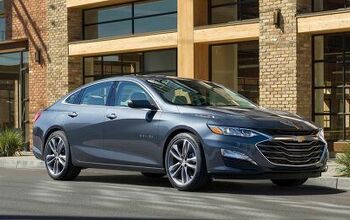
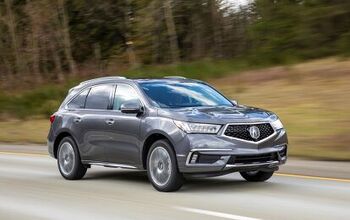



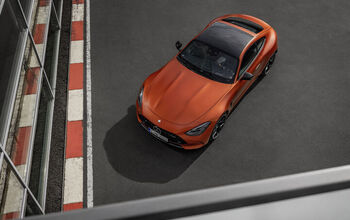


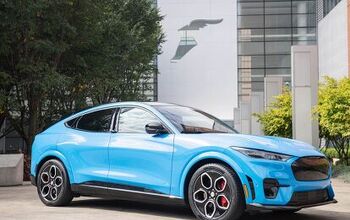
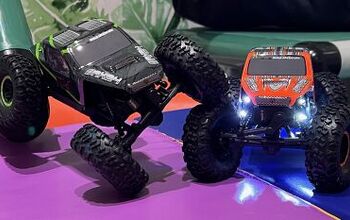

Comments
Join the conversation